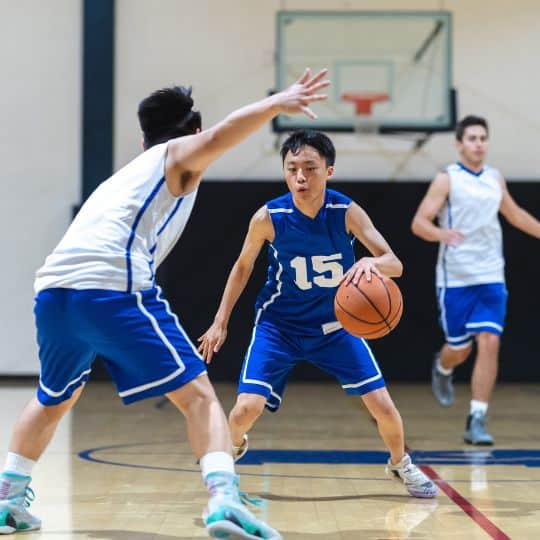
The Direct School Admission (DSA) process is an increasingly popular pathway for Singaporean parents seeking secondary school placements for their children, focusing on talents beyond academics. In this article, we’ll dive into the latest DSA updates for concerned parents, shedding light on the benefits, challenges, and steps to guide your child through this crucial process.
1. What is DSA-SEC and how does it work?
The Direct School Admission (DSA-Sec) system was introduced to recognize and admit students based on their talents in various fields such as sports, arts, leadership, and specific academic areas, well before the PSLE results are released. This scheme allows students to secure a spot in a secondary school by showcasing their abilities, offering a unique admission pathway that goes beyond academic performance.
Parents must understand that once a child is admitted through DSA-Sec, they must commit to that school for the entire duration of their secondary education. The application process is straightforward, conducted via the DSA-Sec Portal. It’s crucial for parents to ensure that their child’s talents align with the school’s specialized programs.
As noted in a Straits Times article, “The DSA scheme, which was introduced to recognise pupils’ achievements in non-academic areas such as sports and the arts, grants Primary 6 pupils places in secondary schools before they sit the Primary School Leaving Examination.“. This makes DSA-Sec an attractive option for many families, but it also demands careful consideration of a child’s long-term commitment to their talent area.
2. DSA vs PSLE – Which Pathway is Best for Your Child?
Parents often wonder whether DSA or the traditional PSLE route is more suitable for their child. The key difference lies in the timing and focus: DSA offers admission based on talents before PSLE, reducing the stress of securing a secondary school spot. In contrast, the PSLE admission pathway relies solely on exam results, which can be a high-pressure situation for many students.
Critics argue that DSA can create a “two-tiered” system. According to Channel NewsAsia, “it was an “open secret” that children from more affluent backgrounds stand a higher chance of benefitting from the DSA programme”. Given these concerns about fairness, it’s essential for parents to thoroughly evaluate both pathways and choose the one that aligns best with their child’s strengths and aspirations.
3. DSA Opportunities and Challenges
The DSA process provides a valuable opportunity for students to secure a school spot based on their talents, but competition is fierce. With only about 20% of applicants gaining admission, students must demonstrate exceptional abilities to succeed. This makes DSA highly selective and demanding.
Additionally, some parents worry that DSA may favor more affluent students with better access to resources, potentially deepening social inequalities. Therefore, it’s crucial for parents to carefully consider if their child’s talents and commitment align with DSA’s rigorous demands before choosing this pathway.
4. How to Apply for DSA-Sec: A Step-by-Step Guide
Applying for DSA-Sec is a straightforward process, but it requires attention to detail and timely action. Here’s how you can navigate the application:
- Visit the DSA-Sec Portal: Begin your application on the official portal. No fees are required.
- Prepare Documentation: Ensure all necessary documents, such as proof of talent and school reports, are ready for submission.
- Align Talents with School Programs: Research individual schools’ specialized programs to match your child’s talents.
By following these steps, you can streamline the DSA application process and increase your child’s chances of a successful admission.
5. Evaluating if DSA Is the Right Fit for Your Child
Determining if DSA is the right pathway for your child involves assessing their strengths, interests, and long-term goals. Engage with teachers, coaches, and mentors to gain insights into whether your child’s talents align with the demands of DSA. Additionally, consider your child’s enthusiasm and commitment to the specific talent area since this will be crucial in sustaining their interest throughout their secondary education. Parents should also reflect on the long-term implications of a DSA placement. Will this pathway support your child’s aspirations, or would the traditional PSLE route be a better fit? Making an informed decision based on your child’s unique strengths is essential.
Navigating the DSA process requires careful consideration of your child’s talents, interests, and long-term goals. While DSA offers a valuable alternative to traditional academic pathways, it’s not the right fit for everyone. Parents should weigh the opportunities and challenges to determine the best route for their child.
In addition to exploring admission pathways like DSA, it’s crucial to equip your child with essential skills for the future. Coding is one such skill that not only complements academic pursuits but also opens doors to a wide range of opportunities in our increasingly digital world. Computhink Kids SG leads the way in coding education in Singapore, offering a comprehensive 10-year coding program designed to nurture young minds from foundational languages to advanced technologies like AI and game programming. By enrolling your child in Computhink’s coding classes, you provide them with the tools to excel both academically and beyond. Whether it’s preparing for the O-Level or A-Level Computing exams or simply fostering a passion for technology, Computhink Kids SG is your partner in ensuring your child’s success.
Related Articles:
- Minecraft Programming for Kids: Learn Coding Through Fun and Play.
- List of Schools Offering O Level Computing in Singapore
- GEP Changes 2024: Insights for Concerned Parents
Stay informed and explore how these trends are shaping the future of education and technology.
